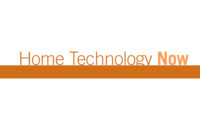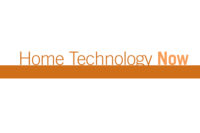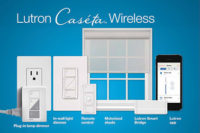“There’s an app for that” has become a common phrase among integrators and consumers alike. We truly do have apps for everything under the sun, so it should not surprise you that when you start working in a client’s home they will want the ability to control their system or elements of their system from their mobile device or tablet. There are a few different ways to handle this request. The three most popular options are app-based control, the black box and the cloud.
App-Based Control
The first design topology for using mobile devices to control system operations is through the use of “apps” (applications) that are commonly proprietary to a single control system or device. Mobile control systems that are designed to use individual apps for each device are very similar in functionality to the classic “all-in-one” IR remotes that came with a list of manufacturer codes for different device types. Users could control all of the devices in the system from a single remote, but there was no ability to create punch-throughs or macro commands. In other words, customers had to push a button to put the remote in TV mode so they could turn on the TV and choose the correct video input. Then they had to push a button to put the remote in receiver mode so they could turn on the receiver and choose the correct audio input; and finally push a button to put the remote in cable mode to turn on the cable box and change channels. This type of functionality can be somewhat cumbersome with the back and forth between devices. It also assumes that the client knows and understands how his/her system is connected and configured so that he or she can correctly choose the proper A/V inputs.
The Black Box
Another method for controlling system components with a mobile device is the black box concept. In this scenario, the tablet is loaded with software (typically through an app) and all programming and command execution lives within the processing of the tablet. Once a command has been given, the tablet communicates with a “black box” that is connected to the home network, which takes the information and converts the control signals to the appropriate medium (IR, RS232, IP, etc.) before sending them to the devices being operated.
The advantage of this setup over the app experience is that all devices are being controlled from a single point of interaction, which enables more complex and advanced programming techniques such as macro commands and the use of conditional logic. However, with multiple devices being controlled and all of the processing being done within the mobile device itself, this setup has the potential to increase latency, which translates to a decrease in the response time of the device being controlled whenever the client presses a button.
The Cloud
Control systems can use mobile devices as gateways to programming and control services hosted off-site, providing Web-based or cloud services. The intelligence is in the cloud, not resident on the mobile device. Any changes to programming or software updates are managed in the cloud by the integrator then pushed to the mobile device. This option gives the integrator much more control over the user interface and system improvements. Another advantage is the ease in populating replacement mobile devices with pre-programmed software. The client is protected against theft, breakage or removal of the mobile device from the home by quickly implementing new devices as needed.
Which option is going to work best for your company and clients? You can get more information about control systems and how to start offering more of them at CEDIA EXPO 2014. Visit cedia.net/expo to learn more.
Contributed by the Custom Electronic Design & Installation Association. To learn more about CEDIA membership visit www.cedia.org/join.
Peter Aylett is a 25-year veteran of the industry, having worked as an installer, salesperson, designer and project manager. He has been involved with CEDIA in the United Kingdom since its inception and has been a volunteer, SME, presenter and evangelist for CEDIA for the past 15 years. Now a consultant, Aylett is passionate about the use of technology in the home to help create a simple, sustainable, enjoyable, secure and beautiful environment.




